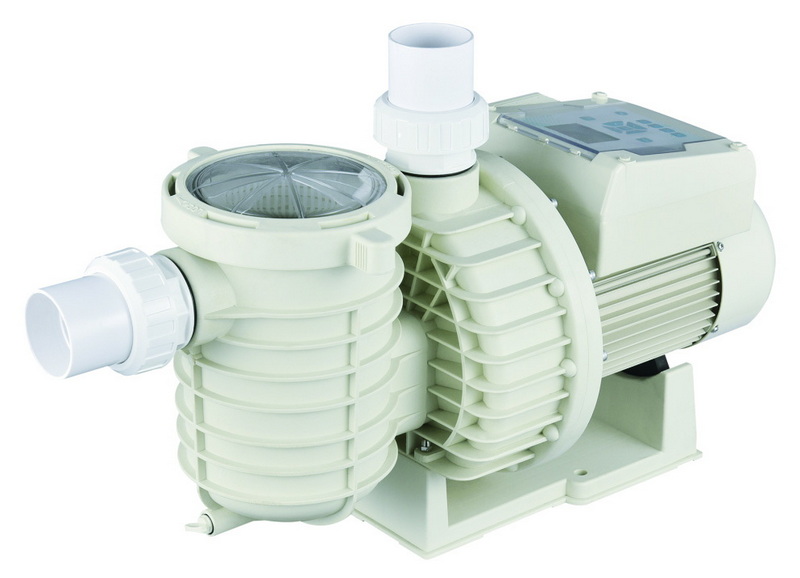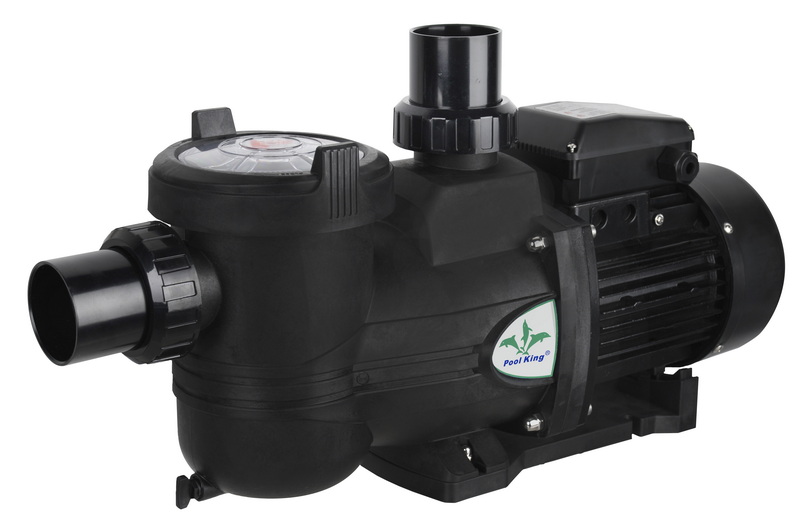Views: 222 Author: Tina Publish Time: 2025-09-28 Origin: Site








Content Menu
● What Is a Pool Pump Capacitor and Why Does It Matter?
● Technical Specifications: Understanding Capacitor Ratings
● Typical Locations and How to Identify Your Pool Pump Capacitor
● How Pool Pump Capacitors Work: A Deeper Look
● Signs Your Pool Pump Capacitor Needs Replacement
● Testing a Pool Pump Capacitor
● Where to Buy a Pool Pump Capacitor
>> 1. Local Pool Supply Stores
>> 2. Hardware and Big-Box Retailers
● How to Select the Right Pool Pump Capacitor (Technical Checklist)
● Step-by-Step: How to Replace a Pool Pump Capacitor
● Global OEM/Wholesale Sourcing Considerations
● Best Practices for Pool Pump Capacitor Maintenance
● Table: Pool Pump Capacitor Brands and Markets
● FAQ
>> 1. Where is the pool pump capacitor?
>> 2. How do I know if my capacitor is bad?
>> 3. Is it safe to use a higher voltage capacitor?
>> 4. How close must the capacitance value match?
>> 5. Where can I buy genuine capacitors in bulk?
The humble pool pump capacitor is a key—yet often overlooked—component of any swimming pool system. When it fails, even the best-designed filtration setups grind to a halt. Whether seeking a fast DIY replacement, bulk ordering as a wholesaler, or integrating capacitors into new equipment design, knowing where and how to buy the right pool pump capacitor is essential. This comprehensive article explores where to buy capacitors, the technical and practical criteria for choosing the right part, detailed replacement guidance, expert troubleshooting advice, and unique wholesale/OEM solutions suited for international customers. Visual aids, real-world examples, and step-by-step instructions are provided to ensure every reader—whether a pool owner, technician, or brand manager—finds actionable answers backed by the latest industry insights.

A pool pump capacitor stores and releases electrical energy to help your pool pump motor start and run efficiently. Essentially, the capacitor provides the surge of power needed to start the motor (start capacitor) and maintain smooth performance once it's running (run capacitor). Without a properly functioning capacitor, pool pumps hum, overheat, underperform, or fail to start altogether. Whether tackling in-ground, above-ground, saltwater, or traditional chlorine pools, most standard residential motors rely on one or both capacitors.[3]
Choosing the right pool pump capacitor means understanding two key ratings:
- Microfarads (µF or MFD): Determines storage capacity, and must closely match the original part for reliable starting and operation. Most modern capacitors have their rating clearly printed on the case.
- Voltage (VAC): The new capacitor's voltage rating should meet or exceed the pump's requirement, but never be lower. If a higher rating is used, ensure it matches the motor's environment and safety compliance.[5][6][3]
Tolerance: Most capacitors have a tolerance of ±5% to ±20%. Choose replacements within 10% of your existing value for best results, but always confirm the manufacturer's recommendation for your specific pump.[6]
Temperature Rating: Ensure the capacitor can handle the range expected in equipment rooms, which may climb over 70°C in midsummer or fall well below freezing outdoors.[6]
Pool pump capacitors are usually housed on, behind, or atop the motor in a plastic or metallic enclosure. Their appearance is generally cylindrical (sometimes rectangular), sized three to five inches, with wire leads or quick-connect terminals.
- Start capacitors are often black, housed at the rear of the pump motor, and labeled with a capacitance range (e.g., 161–193 MFD).
- Run capacitors are often found on top, with steady single-value labels (e.g., 30 µF).[4][5]
Before inspection, always disconnect power at the breaker.
- Start capacitors provide a short, intense energy surge to overcome start-up inertia. They disconnect from the circuit once the pump is spinning at speed, usually via centrifugal or electronic switching.[3]
- Run capacitors deliver a constant boost while the motor is running, improving torque, efficiency, and energy consumption.[3]
- Motors requiring both utilize each in distinct roles for optimal operation.
A capacitor with incorrect values leads to heat build-up, poor performance, and possible motor damage or circuit breaker trips.[4][3]
- Pump hums but doesn't start: Classic sign the capacitor cannot deliver start-up current.
- Breaker trips or motor overheats: Faulty capacitors trigger spikes that trip protection circuits or cause the windings to overheat.
- Water flow is weak or irregular: A failing run capacitor reduces torque, often leading to low efficiency.
- Physical damage: Swelling, leaking, burning, or bulging signs require immediate replacement.[5]

Using a Multimeter:
1. Disconnect the pump from power.
2. Discharge the capacitor with an insulated screwdriver (expect a small pop).
3. Set your multimeter to capacitance or highest resistance (ohms).
4. For resistance: A good cap causes a drop toward zero and then a steady rise. A bad cap will usually stay stuck at zero (shorted) or at infinite resistance (open circuit).[7][8]
Tip: Many multimeters feature a dedicated “capacitance test” mode for direct reading.
Without a Multimeter: If the cap matches failure signs listed above and is inexpensive, simply replace it to rule out as a fault source.[5]
Specialized shops like Leslie's Pool Supplies or Pinch A Penny supply OEM and universal capacitors, often with expert advice on hand.[10]
- Pros: Same-day repair; staff assistance
- Cons: Limited brands and inventory
Retail chains (Home Depot, Lowe's, Ace) stock universal capacitors as part of their parts selection, suitable for common models but limited for rare/matching parts.[11]
- Amazon, eBay: Massive selection, customer reviews, convenient search by model/spec.
- Grainger: Trusted for commercial-grade electrical components; ideal for contractors.[12]
- Pool Guy Supply: Offers free shipping on many items, specialized support.[13]
- Benchmark Pool Supply, Automatic Pool Cover Parts: Specialize in OEM and odd-size parts.[14][15]
For business buyers, OEMs or trusted capacitor manufacturers in China, India, or Europe can provide tailored, bulk, or branded components. Ensure all compliance records are supplied (CE, UL, RoHS), and test compatibility with your equipment line before large scale deployment.
- Tip: Chinese OEMs offer custom packaging, private labeling, and large-scale production.[3]
1. Reference motor nameplate or manual for correct specs.
2. Match microfarad and voltage rating strictly.
3. Measure physical size and connector style (axial, radial, quick-connect, wire-lead, etc.).
4. Vendor reliability: Choose established, well-reviewed brands and suppliers.[16][3]
5. Check for certifications required in the target market.
Using a capacitance rating outside 10% of the original may degrade performance or damage the motor.[6][5][3]
1. Switch off all power at the breaker.
2. Access the electrical enclosure, typically at the rear/top of the motor.
3. Discharge the old capacitor (safely) using an insulated screwdriver.
4. Note the current cap's wiring (take a photo).
5. Remove the old capacitor and install the new one, matching connections exactly.
6. Replace the cover and restore power; test the pump.
- Multiple capacitors in dual-speed pumps: Dual-speed or variable speed pumps may feature two capacitors; ensure both are tested and replaced if faulty.[7][4]
- Capacitor swelling without visible leaks: Any shape change warrants immediate replacement as internal components are compromised.[5]
- Breaker continuously tripping after replacement: Confirm a correct installation—sometimes wiring errors after replacement cause new faults.
For international pool brands and equipment wholesalers, purchasing directly from vetted capacitor factories in China remains the best value for:
- Custom-run/bulk orders with specific branding
- Full compliance with global standards
- Integrated after-sales and troubleshooting support for bulk shipments[3]
Increase reliability (and lower costs) by demanding batch-level testing and failure rate records for all shipments.
- Conduct visual/functional checks during regular maintenance.
- Stock spares of common capacitor sizes for urgent repairs, especially in multi-pool facilities.
- Educate staff on safe handling and symptom recognition.
- Build supplier relationships with proven track records, focusing on consistency and certification compliance.
| Brand Name | Market | Specialty |
|---|---|---|
| Titan HD | US, industrial | Premium, robust construction |
| US Seal | US, pool industry | Long-life, high compatibility |
| BOJACK | Global (online) | Good value, wide selection |
| CBB65 | China, OEM | Widely used, customizable specs |
A pool pump capacitor is small but essential for reliable water circulation, energy efficiency, and overall equipment longevity. Whether a quick residential replacement, professional repair, or enterprise-level sourcing for OEM/ODM solutions, successful capacitor selection relies on understanding technical specifications, recognizing failure symptoms, and buying from trusted sources. Combining local and online retail outlets with global manufacturer networks ensures the best fit for any maintenance scenario. For substantial or recurring needs, partnering with a dedicated OEM supplier—especially those providing smart manufacturing and global certifications—delivers both confidence and cost-effectiveness. Always follow safety procedures, match technical ratings, and don't hesitate to consult a professional for complex troubleshooting. With attention to detail and reliable sourcing, pool pump maintenance becomes simple, efficient, and future-ready.[16][7][6][5][3]

Usually fixed in a round or rectangular enclosure on the rear or top of the pool pump motor. Access may require removing a retaining cover; always cut power first.[4][5]
Common signs: humming but no motor start, tripped breaker, reduced flow, or any bulging or leaking on the cap itself.[7][5]
Yes, using a cap with higher voltage is safe, as long as the capacitance matches. Never use a lower voltage than specified.[6][5]
Stay within 10% of the original rating for reliable operation. For commercial or critical-use pools, follow the manufacturer's exact rating.[6]
For major buyers, direct orders from certified OEMs (especially in China) allow large volumes, customized branding, and robust after-sales support; always verify compliance documentation.[3]
[1](https://www.inyopools.com/HowToPage/how-to-select-the-right-capacitor-for-your-pool-pump-motor.aspx?CommentPage=1)
[2](https://www.inyopools.com/HowToPage/how-to-find-the-right-capacitor-for-your-pool-pump-motor.aspx?CommentPage=1)
[3](https://www.streampumps.com/pump-knowledge/water-pump-capacitors.html)
[4](https://www.hydrospares.co.uk/help-advice-centre/help-articles/pumps/how-to-identify-a-capacitor.htm)
[5](https://www.kscapacitor.com/resources/6-signs-a-pool-pump-capacitor-is-bad-and-how-to-test.html)
[6](https://www.electronics-tutorials.ws/capacitor/cap_3.html)
[7](https://acim.nidec.com/motors/usmotors/-/media/usmotors/documents/literature/ebooks-and-articles/pool-troubleshooting-ebook-120220.ashx?la=en)
[8](https://intheswim.com/blog/how-to-test-a-pool-pump-capacitor.html)
[9](https://capacitor-shop.co.uk/pool-pump-motor-run-capacitors-what-they-are-and-what-they-do/)
[10](https://lesliespool.com/pool-motor-capacitors/)
[11](https://www.homedepot.com/b/Outdoors-Pool-Supplies-Pool-Replacement-Parts/Pool-Pump-Motor/N-5yc1vZcjovZ1z19ww9)
[12](https://www.reddit.com/r/pools/comments/1c2ej38/pool_pump_capacitor_help/)
[13](https://poolguysupply.com/products/size)
[14](https://shop.benchmarkpoolsupply.com/products/capacitor-rd-35-370)
[15](https://www.automaticpoolcoverparts.com/category/motor-capacitor.html)
[16](https://www.reddit.com/r/AskElectricians/comments/1cc1g6h/best_and_worst_capacitor_brands_for_a_pool_run/)
[17](https://www.youtube.com/watch?v=f0muyTib-BM)
